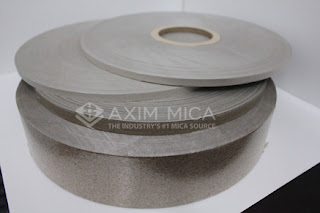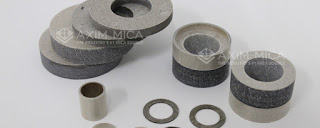Mica minerals are major rock-forming minerals found in granite, gneiss, and schist. Muscovite mica and Biotite Mica are two major groups of mica minerals. They usually form in layers of sediment on ocean floors. Weathering of continental rocks breaks large and small chunks of rock off the larger older rocks.
Moreover, the mica materials break further by rainwater and create a number of sediments. These sediments then carried to the sea by large rivers such as the Mississippi and Amazon Rivers. Each rainstorm brings new sediments and settles down on the seafloor on top of the previous layers. Each layer increases the depth of sediments that produces heat and pressure on the sedimentary layers below. There are multifarious types of
mica products available including, Mica Gaskets, Mica Washers, Mica Tubes, Mica Slip Plane,
Mica Sheets, Flexible Composites, Mica Cable Tape, and much more.
Sedimentary Rock Formation
The upper layer puts pressure on the lower sedimentary layer, and then the upper sedimentary layer puts its weight over lower layer and compresses the moisture out of it. The bottom layer turns into shale, a sedimentary rock shale due to the heat and pressure.
Mica is common minerals that crystallize in these layers. When shale starts the process of recrystallization, it forms microscopic mica minerals that further turn into several mica products.
Muscovite Mica
This is the most widely found mica in granite, gneiss, and schist. This mica mineral is derived from Muscovy-glass which is used in Russian window glass. Today Muscovite mica products are used in glass manufactured for wood stoves.
Muscovite Mica products are also used as a lubricant and in electrical components. Biotite Mica contains magnesium and iron minerals that create a dark mineral that is hard to see through than Muscovite mica.
· Ruby Muscovite: This includes a wide range of colors like white through pink to a light ruby and into shades of brownish ruby and brown. Ruby Mica has can easily split into the desired thinnest film without the risk of cracking, due to its excellent cleavage capabilities.
· Green Muscovite: This mica color range from light to pale green through yellowish and olive green to a dark green. Color has a significant impact on quality. Still, Ruby Muscovite is gradually preferred that too in the higher qualities as it is considered to be superior to green mica. This Mica Mineral has a high dielectric power and low power loss. Use of ruby and green mica is a matter of preference and application.
Phlogopite Mica: This mica mineral is hydrous potassium, magnesium aluminum silicate. Here, the calcination temperature is around 800 Celsius. This mica is more suitable for the manufacture of commutator as it is softer than Muscovite Mica. Phlogopite Mica is commonly called amber mica and varies in colors, from silver to dark brown. This mica has poor electrical properties and chemical resistance in comparison to Muscovite Mica.
These are some of our Mica based products, which creates outstanding results in plenty of industries such as in construction, cosmetic industry, electrical industries, paints, and also used as insulators in various electronics. So, if you are dealing with any of the above businesses and required high-quality mica products, consider Axim Mica.





Comments
Post a Comment